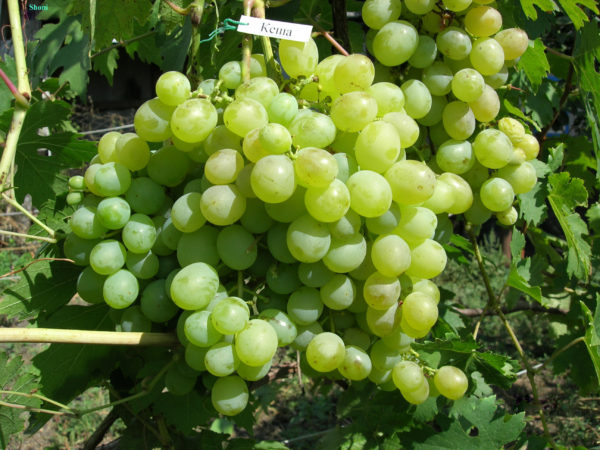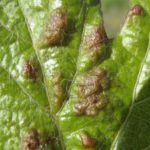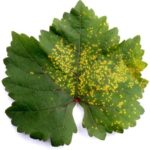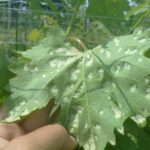Grapes Kesha - a hybrid in the fifth generation, derived by domestic breeders. The variety is popular among experienced gardeners and amateurs. Keshi has advantages and disadvantages in comparison with other grape varieties, including hybrids derived from it (Kesha-1 and Kesha-2).
Table of contents
Kesha grape variety description
As usual, begin with a description of the variety. Kesha - early-ripening table grape (130 days). Shoots ripen early and abundantly (65-80% of the total mass). Cuttings root well. Bushes are strong, tall, productive.The comb is large, the form of clusters is conic-cylindrical. The mass of clusters on average - 900 g
Berries are large (11-15 g) and dense, oval. When fully matured, the color from white changes to amber-green. The taste is sugar (sugar content of fruits 20-24%). Seeds in the berries a little, from one to three pieces. Fruits do not burst, retain an excellent presentation. The variety has high transportability.
Kesha is resistant to mildew, the most dangerous disease of European grape varieties. It is frost-resistant (to-23˚С), but badly transfers winter.
This variety is used to make white wine. They are decorated with a festive table, and berries are eaten both from the bush and chilled.
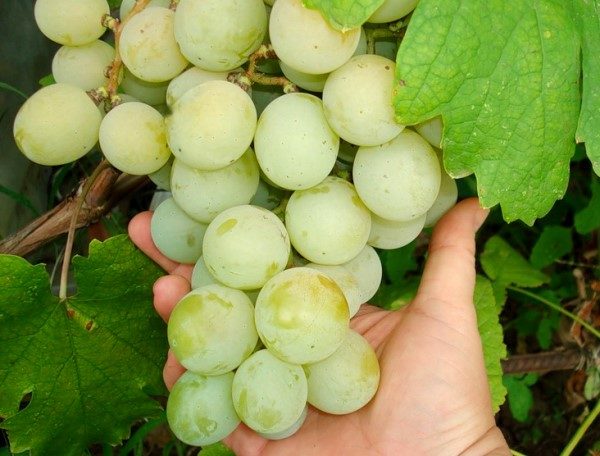
Landing
Before buying seedlings inspect. Healthy seedlings, such as:
- no damage on the roots
- with uniform color
- and green flesh on the cut
Seedlings are planted in spring or autumn. It depends on the climate zone. It is important that the air is warmed to 15 ° C. The day before planting, the seedlings are soaked in a growth stimulant solution. The soil is chosen fertile and loose. Black soil is best suited. Grapes wither quickly in the shade. The place in the garden where it grows should be sunny.
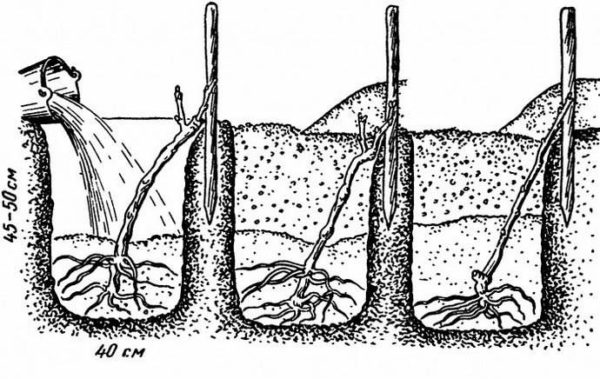
Place for landing prepared in advance. To do this, pits are made in the soil, on the bottom of which lay rotten humus. The distance between the pits is 1.5 m. The seedlings are buried so that the root neck is 5 cm above the ground. After planting, the plants are tied up to vertical supports and watered abundantly with water.
Stock grafted on an old bush
Cache is easy to graft on the stamps of the old plant. Before grafting, the edge of the cuttings is cut off and dipped in a nutrient solution with additional feeding (for example, with Humate).
Shtamb prepare: thoroughly cleaned, and then split or cut with a knife. The cuttings are inserted into the split and tied with a cloth. Several cuttings are grafted onto large shtamby.After grafting, plants are tied up and watered abundantly.
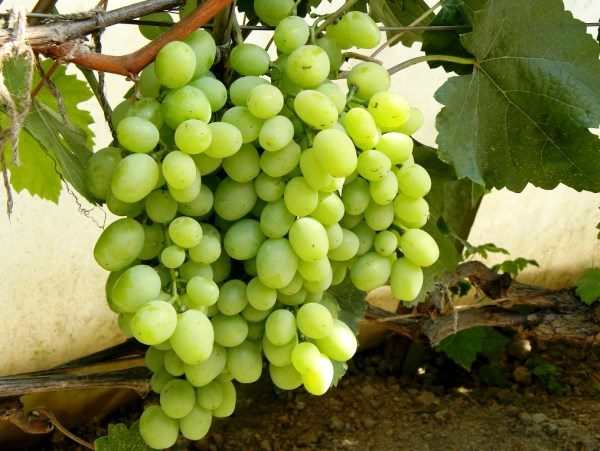
Care rules
The grapes need abundant watering:
- in early spring
- when it blooms
- after flowering
In the dry summer the plants are watered more often. It is important not to pour the grapes, because it is fraught with the development of fungal diseases and loss of planting. To avoid overflowing, gardeners make a drainage system near the vineyard for the outflow of water.
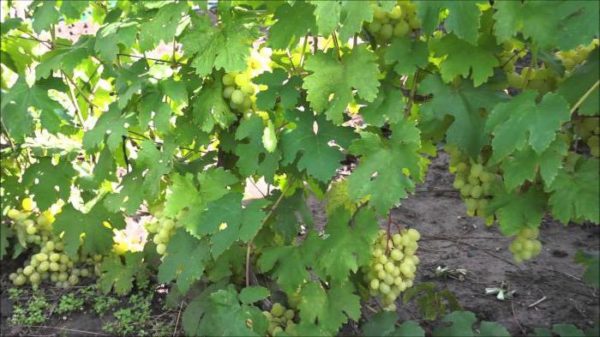
In addition, the plants are mulched. For mulch is suitable rotted manure or peat. A layer of mulch for grapes - 3 cm. This is enough to protect the soil from freezing and keep it in the right moisture.
The variety is fertilized several times per season (the first time in spring) with organic fertilizer or fertilizer with phosphorus and potassium. Fertilizers with nitrogen for grapes are not desirable. Their excess will reduce the quality of the harvest, but will increase the amount of green mass.
That the vine is not exhausted, on one shoot leave one ovary, the largest.This will save the bush from the load, because Kesh fruits abundantly and will help the ovary to ripen and fill with juice. If the crown is too elongated, it is pinched to help the berries ripen.

In the first year, care for Kesha comes down to:
- watering
- pruning
- disease prevention
- soil loosening and mulching
In winter, the ground under the grapes is covered with straw, and shoots bend down to the ground and covered with foil.
Diseases and pests
In the autumn it is important to inspect the plants. With the cold of the disease slow down the development, and pests are looking for a place to winter. And in the spring, instead of flowering shoots, there is a risk of getting infected.
Mealy dew
This is a fungus that affects the green mass of plants. It spreads very quickly. Its sign is a yellowish tuberous bloom on the leaves. They fight with a fungus with a solution of ferrous sulfate (300 g per bucket of water). Besides him, fungicides will help in the fight against fungus: Mikal and Strobe.
Processing plants carried out on a windless day, in the means of protection for the respiratory tract and eyes.It is important to ensure that drugs do not get on the skin.
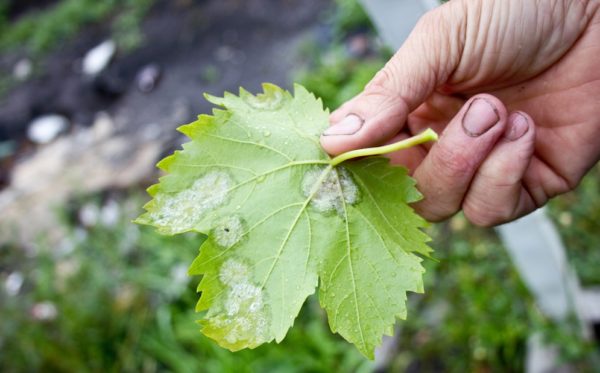
Gray rot
A fungus that spreads quickly in dampness. Develops in dark and poorly ventilated areas. It affects all parts of plants. Its distinguishing feature - brown spots with a gray bloom. Affected areas and fallen parts of plants are removed from the garden and destroyed. They remain active spores of the fungus.
To prevent the development of gray rot, the plants are sprayed with a solution of Folpan, a contact fungicide. And for infected plants suitable drugs Topsin M and Rorval Flo.
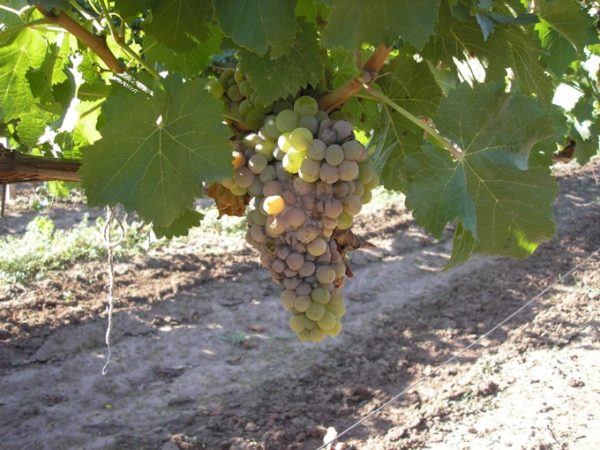
Pliers
They are easy to detect by looking at the inside of the sheet.
- Brown spots, covered with down is a sign of a felt tick.
- Light spots with a yellow bloom leaves behind a grape spider mite.
- Yellow spots around the holes in the leaves indicate the presence of leaf mites.
In the case of mass infection with ticks, gardeners use insecticides: Aktara and Vermitek. When working with them, it is important to observe precautions, as they are toxic to humans.A less aggressive pest control is Karbofos, as well as decoctions and infusions of wormwood, tobacco, and potato tops.
- Felt mite on a grape leaf
- Leaf mite infecting grape leaves
- Defeat of spider mite
In order for the vine to grow healthy it is important to follow the simple rules of agrotechnology:
- To plant seedlings on an open and sunny area without shadows.
- Thin out the plants, getting rid of unnecessary greens.
- For abundant harvest water is needed, but its excess will destroy the grapes.
- Be careful with pest control. Harmful substances, once inside the fruit, will change their taste and reduce their usefulness.
- Apply top dressing as needed, their excess stimulates the growth of green mass, and not the ovaries.
Grapes Kesh does not require special attention. On the contrary, in caring for him it is important to remember the measure, and take measures in a timely manner. Only then expectations will pay off with tasty and healthy berries that will delight you and your loved ones.
